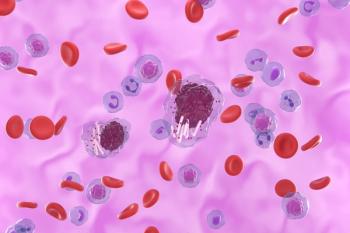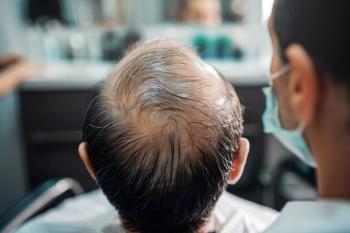
Global Incidence of Alopecia Areata Increased, Underscoring Need for Comorbidity Research
Key Takeaways
- Alopecia areata incidence increased globally from 1990 to 2021, with ASIR slightly declining, indicating complex socioeconomic and health care factors at play.
- The disease affects 2% of the global population, with significant mental health and unemployment risks, particularly impacting women aged more than 45 years.
Alopecia areata cases increased from 1990 to 2021, highlighting the need for further research into socioeconomic factors and disease burden.
Global incidence of alopecia areata increased from 1990 to 2021 with age-standardized incidence rates (ASIR) slightly declining, highlighting the complex socioeconomic factors, health care access, and disease burden that should be further investigated to identify underlying comorbidities, according to a study published in the
Alopecia areata affects approximately 2% of the global population, most commonly in women aged more than 45 years. Patients with alopecia typically face an increased risk of mental health conditions. Previous research demonstrates a 30% to 38% greater risk of new-onset anxiety and a higher risk of depression.2 Individuals diagnosed with alopecia are 56% more likely to receive time off work, and they face an 82% higher risk of unemployment compared with other populations.
These factors demonstrate alopecia's profound impact on an individual’s psychological health and quality of life (QOL).1 Experts consider alopecia areata a
Research on genetic predispositions, environmental triggers, and autoimmune responses provides evidence that these factors increase the risk of alopecia.3 Psychological stress, viral infections, medications, and hormonal changes could contribute to developing alopecia areata.
Researchers used data from the Global Burden of Disease study 2021 database to conduct a study.1 The database measured deaths, years of life lost, years lived with disability, disability-adjusted life years, prevalence, and incidence. Researchers derived data from 204 countries and territories, including Asia, Africa, the Americas, and Europe.
The global incidence of alopecia areata grew from 20.43 million (95% uncertainty intervals [UI], 19.77-21.09) in 1990 to 30.89 million in 2021 (95% UI, 29.95-31.82). The ASIR dropped from 393.7 (95% UI, 381.6-405.7) per 100,000 individuals in 1990 to 379.5 (95% UI, 368-391.1) per 100,000 individuals in 2021.The Estimated Annual Percentage Change (EAPC) between 1990 to 2021 measured –0.14 (95% CI, –0.15 to –0.13) and the Average Annual Percentage Change (AAPC) was –0.12 (95% CI, –0.13 to –0.11). These findings represent a slight global decline in incidence of alopecia areata.
Researchers found the highest ASIR values in 2021 in North America, South America, Southeast Asia, and Australia. The US’s ASIR exceeded 550 per 100,000 individuals and Canada’s ASIR surpassed 500 per 100,000 individuals. Researchers found the lowest global ASIR values in 2021 in Africa and the Middle East.
Between 1990 and 2021, alopecia areata cases in Eastern Europe and Russia decreased. During this time, cases in North America, Argentina, China, and South Korea saw increases of less than 50%. Most of Africa experienced a greater than 100% increase in alopecia areata incidence, and the US showed the most significant decline in incidence. Countries with higher incidence rates in 2021 demonstrated a downward trend over the past 32 years, while countries with lower incidence rates in 2021 had an upward trend.
Sex, age, socioeconomic indices (SDI), Human Development Index (HDI), and geographic location influenced annual alopecia areata cases and slightly reduced ASIRs. Women had twice the incidence and significantly higher ASIRs than men from 1990 to 2021 (P < .001), though EAPC and AAPC for incidence showed no significant sex differences. The Americas recorded the highest ASIR, followed by Europe, Asia, and Africa.
Individuals aged between 25 and 40 years experience the highest incidence of alopecia areata, and the 30 to 34 years old age group has the highest ASIR. The ASIR for those aged less than 20 years or more than 70 years was significantly lower (P < .001). Across most regions, the EAPC in incidence in men exceeds that in women.
Overall, individuals aged 70 years and above in each region showed a negative EAPC in incidence and their EAPC values were lower than those of other ages. Regions with higher SDI (P = .017) experienced significantly higher ASIR, and the EAPC in incidence was significantly lower in these regions (P = .028). Other regions showed a negative trend, while individuals aged less than 20 years in the Americas demonstrated a positive EAPC in incidence.
A robust interrelationship exists between alopecia areata and comorbidities such as atopic dermatitis, dietary iron deficiency, viral skin diseases, and depressive disorders, with all showing strong correlations (correlation coefficient > .6; P < .001). Specific associations varied by age and sex, including atopic dermatitis correlated more strongly in those aged less than 20 years, iron deficiency in those aged 50 to 69 years, acne vulgaris in men, and anxiety disorders in women.
Regions with high-SDI showed strong correlations between anxiety disorders and alopecia areata, whereas in low-SDI regions, some comorbidities, such as cirrhosis due to alcohol, negatively correlated with alopecia areata. Among the under-20 group, atopic dermatitis correlated more highly with alopecia areata, while in those aged 50 to 69 years, conditions such as anxiety disorders and rheumatoid arthritis associated more strongly with alopecia areata. In individuals aged 70 years and older, rheumatoid arthritis and pruritus notably correlated with alopecia areata.
Data limitations, including inconsistent sources and quality, likely led to an underestimation of alopecia areata burden in some underserved countries. Low diagnostic rates and limited treatment access in these regions, along with unaddressed individual factors like race, lifestyle, culture, and health practices, further impacted comprehensive assessment.
"Future research should focus on unraveling the underlying mechanisms linking alopecia areata to its comorbid conditions, exploring regional disparities in disease burden, and identifying modifiable risk factors,” study authors concluded.
References
1. Zhou J, Liang L, Zhang H, et al. Global burden of alopecia areata and associated diseases: a trend analysis from 1990 to 2021. J Cosmet Dermatol. 2025;24(3):e70076. doi:10.1111/jocd.70076
2. Macbeth AE, Holmes S, Harries M, et al. The associated burden of mental health conditions in alopecia areata: a population-based study in UK primary care. Br J Dermatol. 2022;187(1):73-81. doi:10.1111/bjd.21055
3. A complete guide to alopecia areata. ISHRS. April 11, 2025. Accessed May 29, 2025.
Newsletter
Stay ahead of policy, cost, and value—subscribe to AJMC for expert insights at the intersection of clinical care and health economics.









































